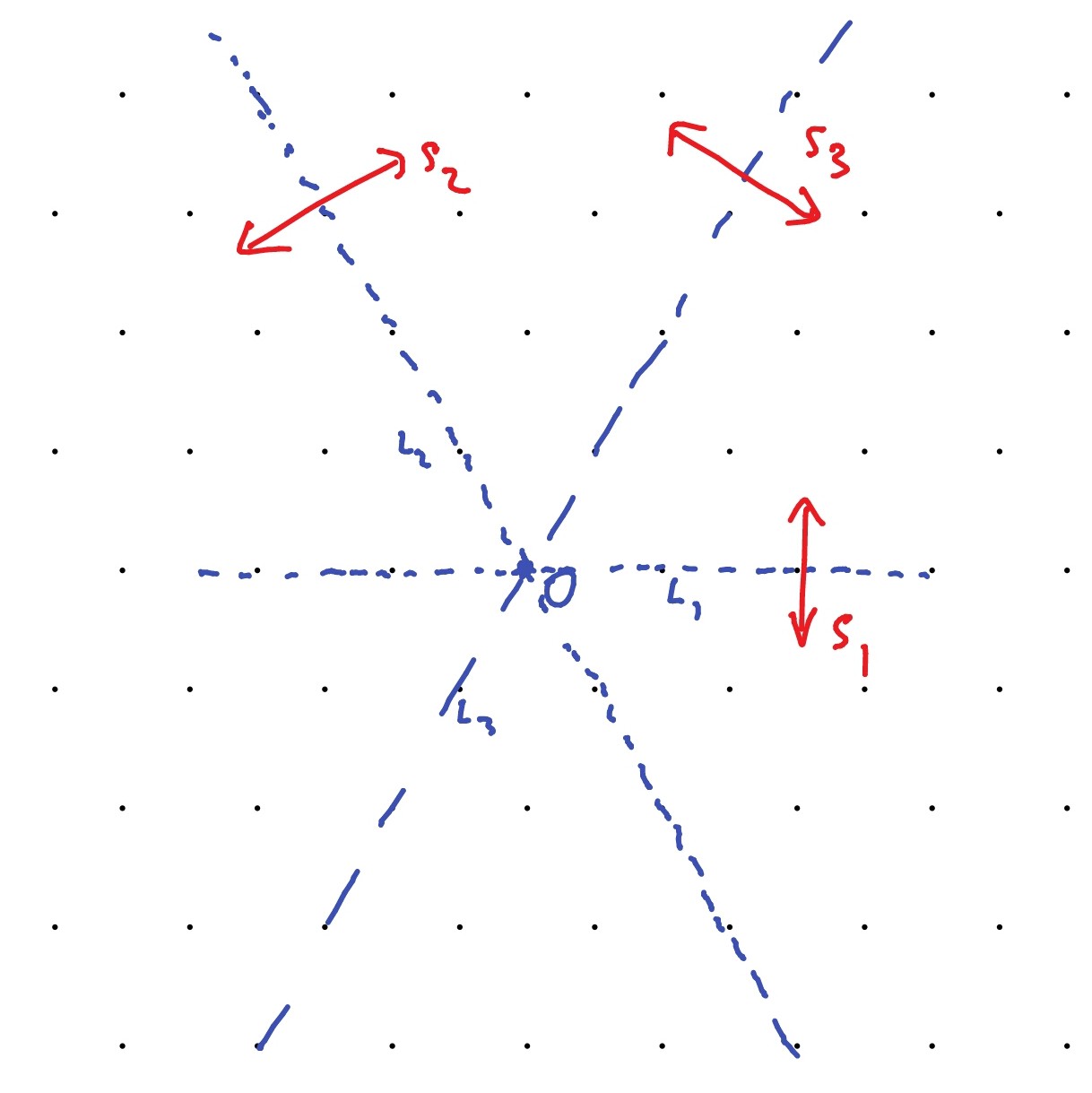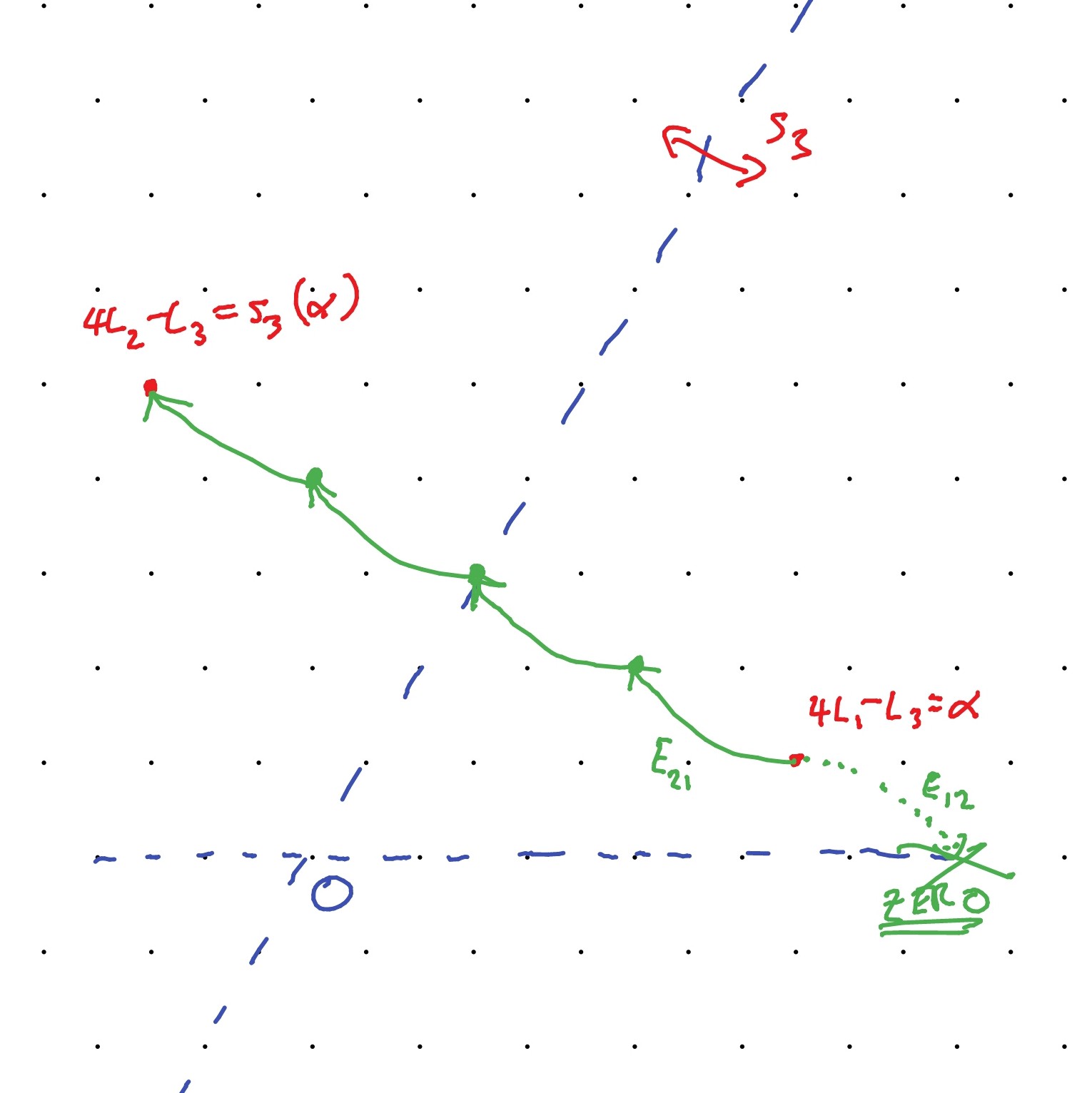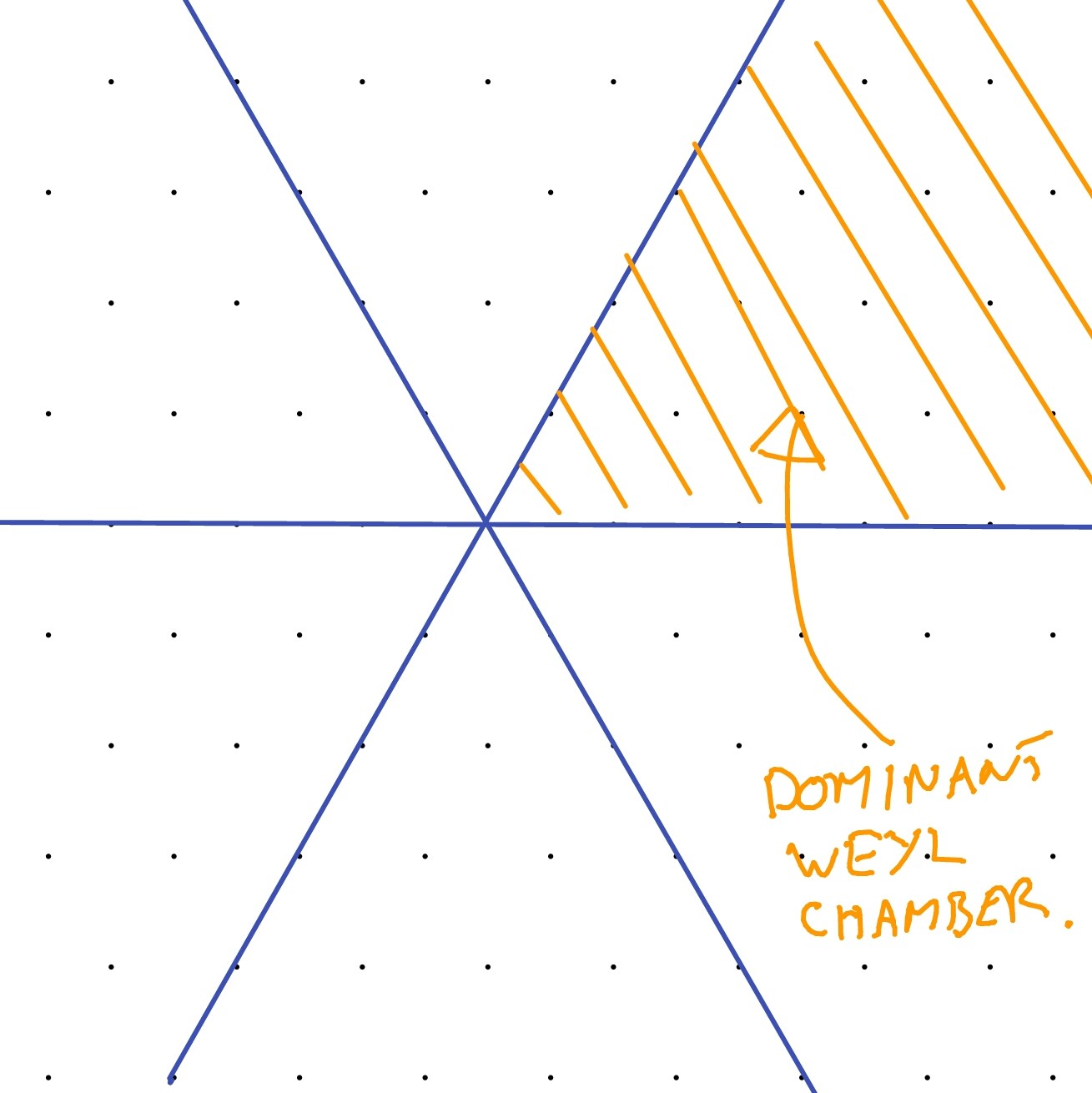7.7 Weyl symmetry — not examinable
Let , , and be, respectively, reflections in the lines through , , and . Then any two of these (say and ) generate the Weyl group , which is the group of symmetries of the triangle with vertices . So we have . Note that acts on the plane in a way that preserves the weight lattice. See Figure 10.

Theorem 7.25.
Let be a finite-dimensional representation of . Then the weights of are symmetric with respect to the action of the Weyl group.
Proof.
We will prove they are symmetric with respect to by using the inclusion
that puts a matrix in the top left corner of a matrix. We consider the restriction of to .
Note that if is a weight vector with weight , then
Thus is an -weight vector with weight . Note that , so an -weight vector in is an -highest weight vector if it is killed by . Note also that .
The kernel of on is preserved by (check it!) and so has a basis made up of -weight vectors . These are then a maximal set of linearly independent highest weight vectors for and in particular, if is the -representation generated by then, as an -representation,
Fix ; it suffices to show that has a basis of -weight vectors whose weights are preserved by . Let have weight . It follows from the -theory that and — remembering that — that has a basis
By the FWC (Lemma 7.18) we see that these are weight vectors with weights
which are symmetrical under (this reflection swaps and ), as required. This argument is illustrated in Figure 11

Invariance with respect to the other reflections is proved similarly using the other inclusions of in . ∎
Corollary 7.26.
Every highest weight is of the form for integers. The region
is called the dominant Weyl chamber and weights inside it (including the boundary) are dominant weights.
Proof.
Indeed, in the course of the proof of Theorem 7.25 we showed that if was a highest weight, then . A similar argument shows that . ∎

Exercise 7.27.
We can give another proof of Weyl symmetry using the Lie group . Let is a representation of . As is simply-connected exponentiates to a representation, , of . Let
Show that, for every weight , is an isomorphism
Give another proof of Theorem 7.25.